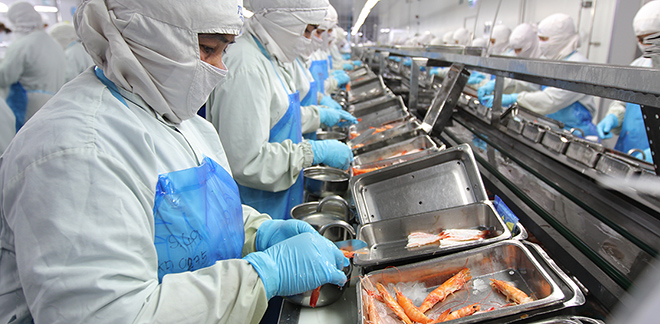Peruvian food industry: Explore the sectors with the best investment opportunities
Síguenos en:Google News
With careful planning and a long-term vision, the Peruvian food industry is becoming an increasingly attractive destination for investors.
Fueled by its rich resources and high-quality products, the Peruvian food industry has become a key driver of the country's economic growth. This sector presents numerous investment opportunities, particularly in areas that align with global trends toward healthy, sustainable, and premium-quality food consumption.
 Source: A Bryce / PROMPERÚ
Source: A Bryce / PROMPERÚ
PERU: A DESTINATION FOR INVESTMENT IN FOOD INDUSTRIES
Peru currently offers the most competitive industrial service costs in Latin America, including the second-lowest electricity, water, and natural gas rates. Coupled with the country's growth in production, this positions Peru as a major investment destination.
Here are the fastest-growing sectors in the Peruvian food industry:
1. Agribusiness
Peru has established itself as one of the world’s leading exporters of agricultural products. In recent years, superfoods like grapes, avocados, and blueberries have become symbols of Peruvian agribusiness.
Peru's agro-exports (both traditional and non-traditional) reached USD 10,201 million in 2023, accounting for 3.8 % of the Gross Domestic Product (GDP). This positions Peru as a key global supplier of fruits and vegetables.
 Source: BIIP / PROMPERÚ
Source: BIIP / PROMPERÚ
2. Fishing industry
Known for its rich marine resources, particularly in anchovy production, Peru is a vital resource for the fishmeal and fish oil industry. According to the National Institute of Statistics and Informatics (INEI), a total of 2,638 thousand tons of marine species intended for indirect human consumption (anchovy) were extracted from January to July 2024, compared to 646 thousand tons during the same period last year, representing an increase of 308.3 %.
In contrast, the catch for direct human consumption decreased by 6.0%, due to a lower availability of species intended for the freezing industry.
In contrast, the catch for direct human consumption decreased by 6.0 %, due to lower availability of species intended for the freezing industry (-16.2 %) and curing (-46.0 %). It is important to note that aquaculture is a sector with immense untapped potential. The farming of species such as shrimp, trout, and paiche is steadily growing in both the local market and exports. According to the National Fishery Health Agency (SANIPES), part of the Ministry of Production (PRODUCE), Peru now meets the standards required to export these products to the European Union.
 Source: Pioneros Cine / PROMPERÚ
Source: Pioneros Cine / PROMPERÚ
3. Traditional beverages and spirits
This sector presents compelling opportunities. Pisco, the flagship beverage, has significant potential for export growth. Additionally, beverages made from superfoods, such as juices and natural energy drinks, have been gaining popularity in recent years.
According to the National Superintendency of Customs and Tax Administration (SUNAT), Pisco exports in 2023 exceeded US$9 million, with the main destination countries being the United States, Spain, Japan, the Netherlands, and Belgium. Rum presents an interesting case, as it ranks as Peru's third most exported alcoholic beverage, following Pisco and beer. From January to June of this year, the primary export markets for Peruvian rum were Colombia (72.3 %), the Netherlands (17.3 %), Ecuador (3.1 %), the United States (2.2 %), and Germany (2.1 %), according to the Institute of Economic and Social Studies (IEES) of the National Society of Industries (SNI).
 Source: Maritza Rodriguez / PROMPERÚ
Source: Maritza Rodriguez / PROMPERÚ
4. Containers and packaging
The packaging sector in Peru has seen substantial growth in recent years, fueled by the expansion of the food and pharmaceutical industries, as well as the export of agricultural products.
This growth has created new export opportunities, particularly in markets with high demand for packaged products meeting stringent quality standards. For example, Chile has become the second-largest destination for these exports, with a total of USD 90 million.
According to the Commission for the Promotion of Peru for Exports and Tourism (PROMPERÚ), the products with the highest demand were flexible plastic packaging (30 %), cardboard and paper containers, and packaging for agribusiness and the food industry (15 %), and plastic crates and cages (12 %).
 Source: Shutterstock / PROMPERÚ
Source: Shutterstock / PROMPERÚ
The Peruvian food industry is currently experiencing a period of expansion and diversification, driven by both domestic and international demand for high-quality products. Investing in these sectors not only presents opportunities for economic returns but also supports the sustainable development of the country.








